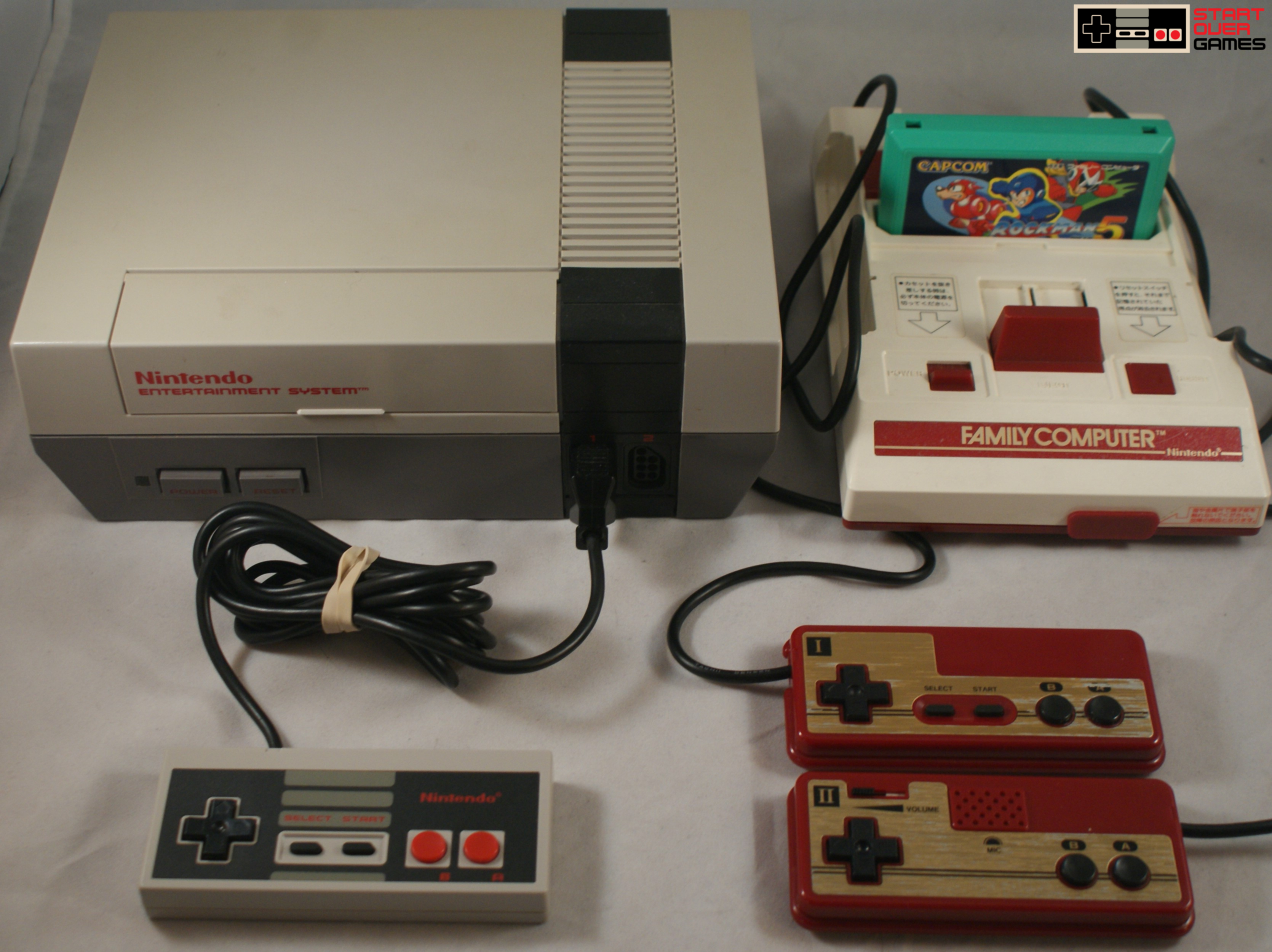(Our first article! Published on January 11th 2016, we cover the changes Nintendo made to the NES before shipping it to the United States.)
Hello there! One of the many things I wanted to achieve when creating Start Over Games was to make sure that it would be more than just another business based strictly on the buy-sell-trade aspect of retro gaming. I want it to be something that will help people find nostalgia, rekindle old video gaming memories, and help them learn more about the games and systems we all enjoy.
In my personal experience I’ve found that besides actually playing games, nostalgia and memories can best be revived through story and discussion.
Now with that said, we would like to start rolling out a few different types of articles that we feel should help with these things. The first of these being “Retro Write-Ups”. They are designed to be short, cover a wide variety of subject matter, and contain plenty of interesting information. (Some of which may be considered pretty common knowledge and some that you hopefully have never heard before.)
We encourage anyone who takes the time to read them to share, comment, ask questions, and click the like button. Doing so will let us know we’re not wasting our time with this.
Finally, we need to ask a few additional things of you. First, please take these articles solely for the purpose of what they were written for, entertainment. We do not know everything there is to know about retro games, nor do we claim to. Some information in these articles should be considered opinion and not be taken as fact. Second, please be constructive with comments. If you have something to add that pertains to the subject, please share it. Lastly, please be polite and considerate of others with any comments you leave. Everyone who visits this page shares an interest in video gaming, but please remember we are all at different levels when it comes to knowledge about them. The last thing we ever want to see is someone scared to ask a question for fear of being ridiculed.
Rant over, enjoy the write-up! -Rob
So I know what you are thinking: “What is that crazy looking thing next to that NES that kind of looks like a NES but can’t possibly be a NES because I’ve never seen a NES that looks like that before?”
Well, believe it or not, that console is actually the Japanese version of an original 8-bit Nintendo, called the Family Computer, or Famicom for short. It was released in Japan in 1983, two years before we would ever see the NES we all know and love here in the United States.
So if it was only released in Japan two years before America, why the heck does it look so different?
Nintendo was afraid that if they released a console in the U.S. it would fail. Sounds crazy, I know. But you have to remember, this was the mid 1980’s, and before Nintendo was the mega video game power it is today. They were afraid of releasing a system because of the video game crash of 1983. You can go google that if you’d like. Go ahead, I’ll wait.
Oh good, you’re back! So as I was typing, Nintendo was afraid to release a home video game console in the United States and knew that if they were to do so, a re-design of the Famicom would be necessary. Nintendo figured that if they could make a console that looked familiar and appealed to Americans, it would have a better chance of survivability in the U.S. market.
So what should it look like? How about something that most Americans had already connected to their TVs. How about, a VCR? No joke, Nintendo designed the NES to look like a VCR. It never occurred to me until I found out about it, but it really does look like one. The boxy shape, having to load the game in front, and having buttons instead of switches, are all characteristics of a VCR.
There are a few other differences that should be noted too. It would appear that Nintendo thought the American saying of “Bigger is Better” was true. Not only did they make the system itself bigger, they also made the controller cords longer as well. And while we’re on the subject of controller cords, why are the cords on the Famicom on the back of the system and hardwired in? The speculation is that Nintendo hardwired them to cut down on manufacturing costs. They put the cords on the back of the system because in Japan, most living rooms were small, so the cords did not need to reach as far. And also note, the second controller on the Famicom has a microphone instead of “START” and “SELECT” buttons. Ever wonder why player 2 can’t use pause when playing some NES games?
Isn’t it just amazing how something that’s pretty much the same on the inside, can look so different on the outside? I guess in the end it turned out to be a smart move by Nintendo.
